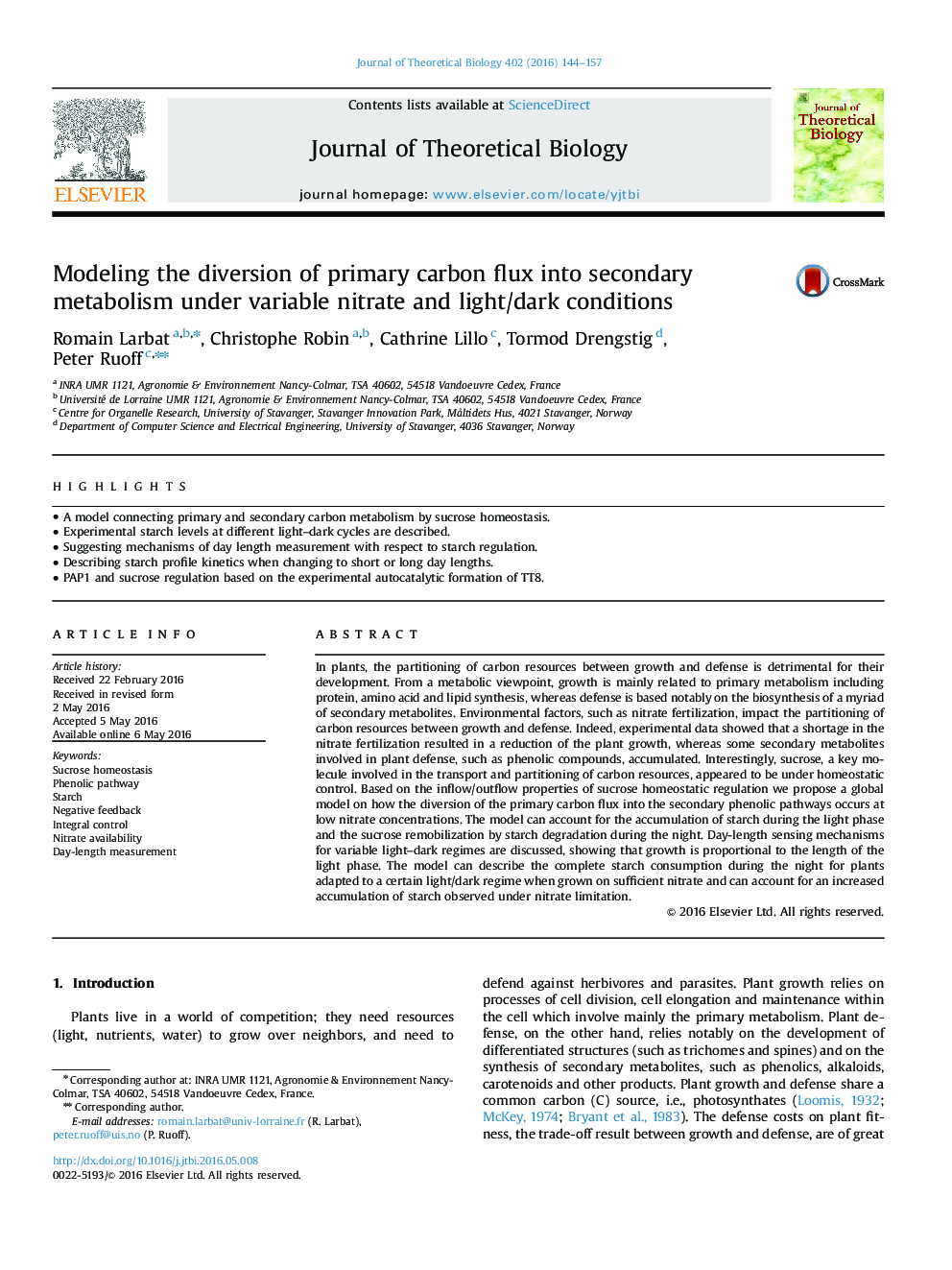| کد مقاله | کد نشریه | سال انتشار | مقاله انگلیسی | نسخه تمام متن |
|---|---|---|---|---|
| 4495806 | 1623808 | 2016 | 14 صفحه PDF | دانلود رایگان |
• A model connecting primary and secondary carbon metabolism by sucrose homeostasis.
• Experimental starch levels at different light–dark cycles are described.
• Suggesting mechanisms of day length measurement with respect to starch regulation.
• Describing starch profile kinetics when changing to short or long day lengths.
• PAP1 and sucrose regulation based on the experimental autocatalytic formation of TT8.
In plants, the partitioning of carbon resources between growth and defense is detrimental for their development. From a metabolic viewpoint, growth is mainly related to primary metabolism including protein, amino acid and lipid synthesis, whereas defense is based notably on the biosynthesis of a myriad of secondary metabolites. Environmental factors, such as nitrate fertilization, impact the partitioning of carbon resources between growth and defense. Indeed, experimental data showed that a shortage in the nitrate fertilization resulted in a reduction of the plant growth, whereas some secondary metabolites involved in plant defense, such as phenolic compounds, accumulated. Interestingly, sucrose, a key molecule involved in the transport and partitioning of carbon resources, appeared to be under homeostatic control. Based on the inflow/outflow properties of sucrose homeostatic regulation we propose a global model on how the diversion of the primary carbon flux into the secondary phenolic pathways occurs at low nitrate concentrations. The model can account for the accumulation of starch during the light phase and the sucrose remobilization by starch degradation during the night. Day-length sensing mechanisms for variable light–dark regimes are discussed, showing that growth is proportional to the length of the light phase. The model can describe the complete starch consumption during the night for plants adapted to a certain light/dark regime when grown on sufficient nitrate and can account for an increased accumulation of starch observed under nitrate limitation.
Journal: Journal of Theoretical Biology - Volume 402, 7 August 2016, Pages 144–157
